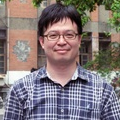Nanomaterials and Nanofabrication for Solar Cells and Energy Harvesting
A special issue of Nanomaterials (ISSN 2079-4991). This special issue belongs to the section "Solar Energy and Solar Cells".
Deadline for manuscript submissions: closed (20 August 2023) | Viewed by 10423
Special Issue Editors
Interests: thin films; soft robots; mechanics; biological materials; bioinspired design; shape morphing
Special Issue Information
Dear Colleagues,
Renewable energy technologies have attracted much attention over the past decades due to the increasing concern of the global energy crisis and environmental pollution caused by the consumption of nonrenewable fossil energy sources. Unlike fossil energy, renewable energy is sustainable as it is available in the ambient environment in light, mechanical vibrations, heat, and fluid flows and can be harvested into clean electricity. Solar cells are regarded as a promising renewable energy source for large-scale applications. On the other hand, energy harvesting also converts the ambient energy in various forms into electricity, but at much smaller levels of power for applications where batteries are impractical, such as wearable electronics, sensor networks, or devices in inaccessible remote areas. The advances in solar cells and energy harvesting have been enabled by the continuous development of novel nanomaterials and nanofabrication techniques. For example, textured transparent electrodes using nanowires/nanoparticles, co-doping of transparent conductive oxides, plasma treatment, or oblique angle deposition can enhance the optical path length of solar cells, leading to a higher power conversion efficiency. Similarly, energy harvesting devices require the use of piezoelectric materials (mechanical vibrations), thermoelectric materials (heat), or materials with a strong triboelectrification effect (mechanical sliding motion).
This Special Issue will present comprehensive research covering the progress on nanomaterials or nanofabrication techniques for improving the performance of solar cells and energy harvesting devices. It aims to attract academic and industrial researchers to foster the current knowledge of renewable energy and present new ideas for future applications and technologies. We welcome original research articles and review articles.
Prof. Dr. Jia-Yang Juang
Dr. Li Xu
Guest Editors
Manuscript Submission Information
Manuscripts should be submitted online at www.mdpi.com by registering and logging in to this website. Once you are registered, click here to go to the submission form. Manuscripts can be submitted until the deadline. All submissions that pass pre-check are peer-reviewed. Accepted papers will be published continuously in the journal (as soon as accepted) and will be listed together on the special issue website. Research articles, review articles as well as short communications are invited. For planned papers, a title and short abstract (about 100 words) can be sent to the Editorial Office for announcement on this website.
Submitted manuscripts should not have been published previously, nor be under consideration for publication elsewhere (except conference proceedings papers). All manuscripts are thoroughly refereed through a single-blind peer-review process. A guide for authors and other relevant information for submission of manuscripts is available on the Instructions for Authors page. Nanomaterials is an international peer-reviewed open access semimonthly journal published by MDPI.
Please visit the Instructions for Authors page before submitting a manuscript. The Article Processing Charge (APC) for publication in this open access journal is 2900 CHF (Swiss Francs). Submitted papers should be well formatted and use good English. Authors may use MDPI's English editing service prior to publication or during author revisions.
Keywords
- photovoltaics
- solar cells
- energy harvesting
- nanomaterials
- nanofabrication
- nanostructures
- laser processing
- piezoelectric energy harvesting
- thermoelectric power generators (TEGs)
- triboelectric nanogenerators (TENGs)







